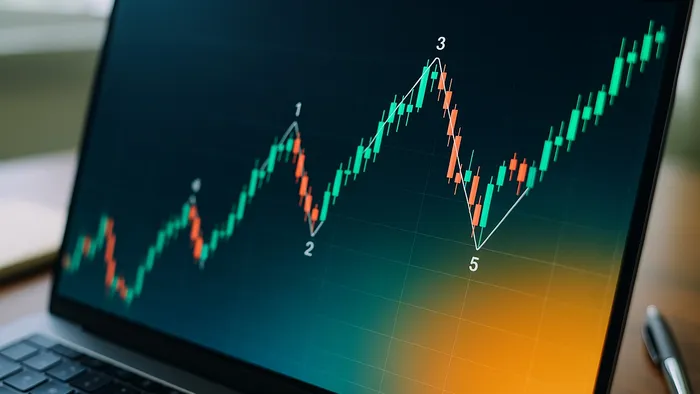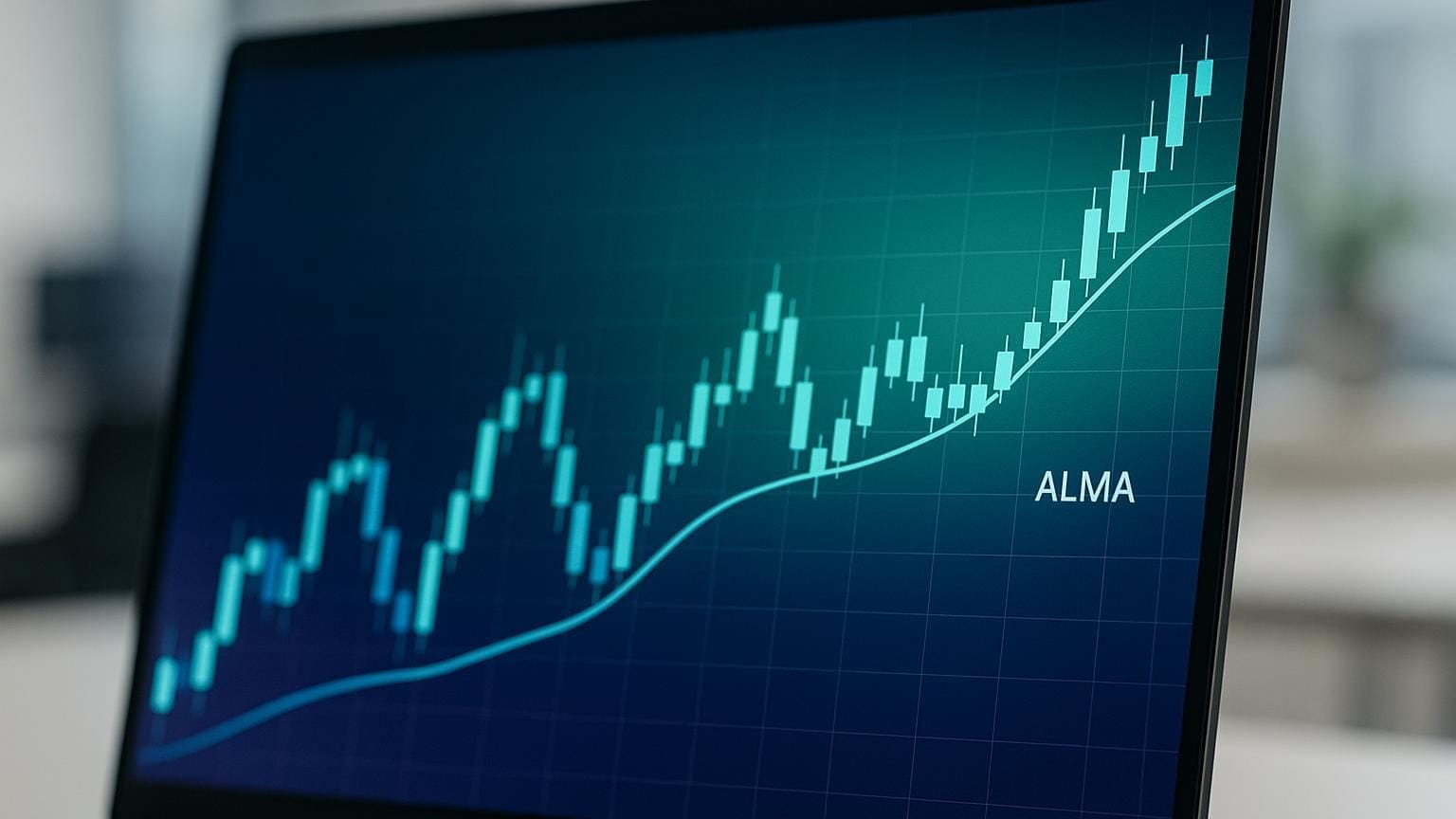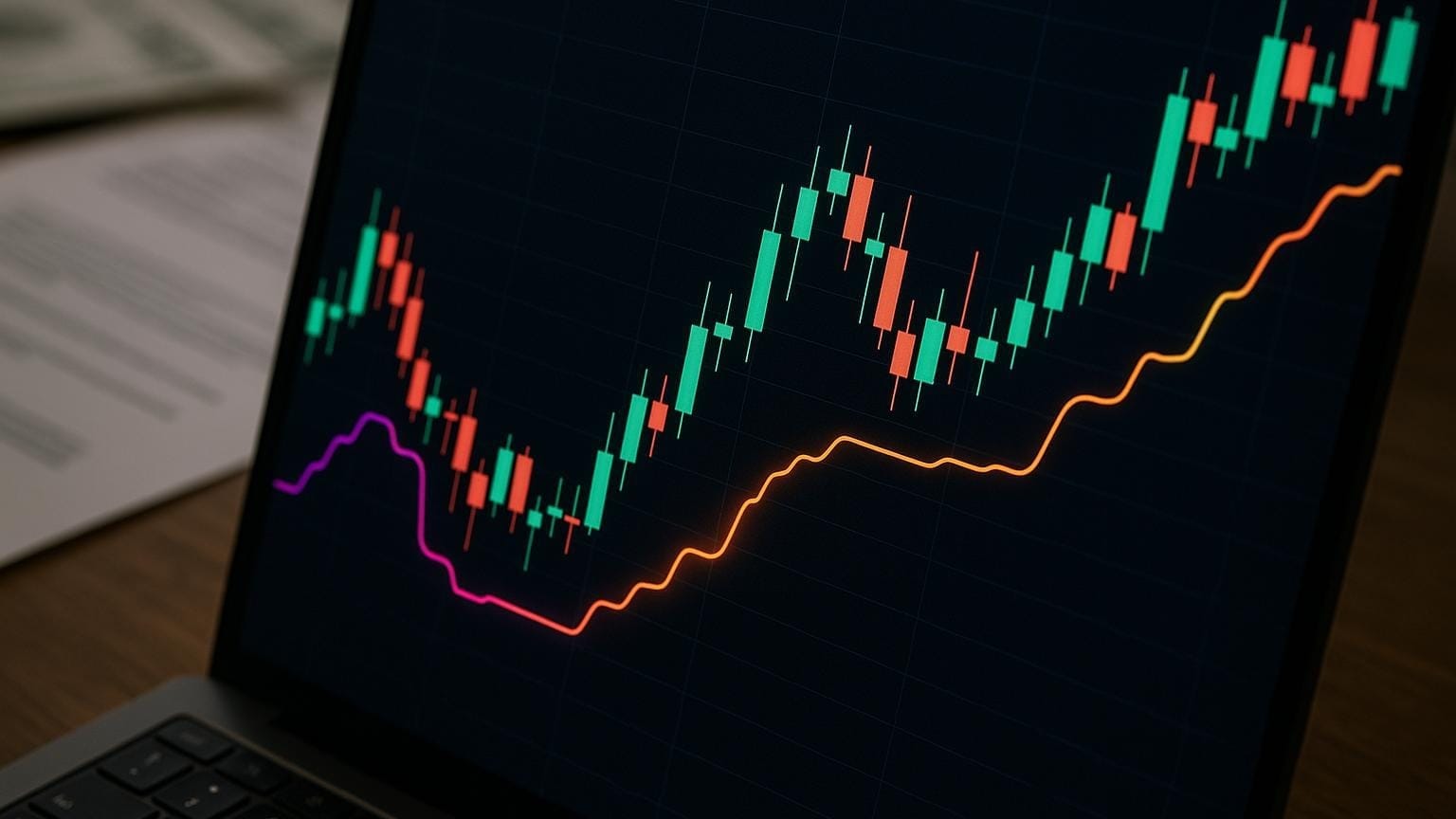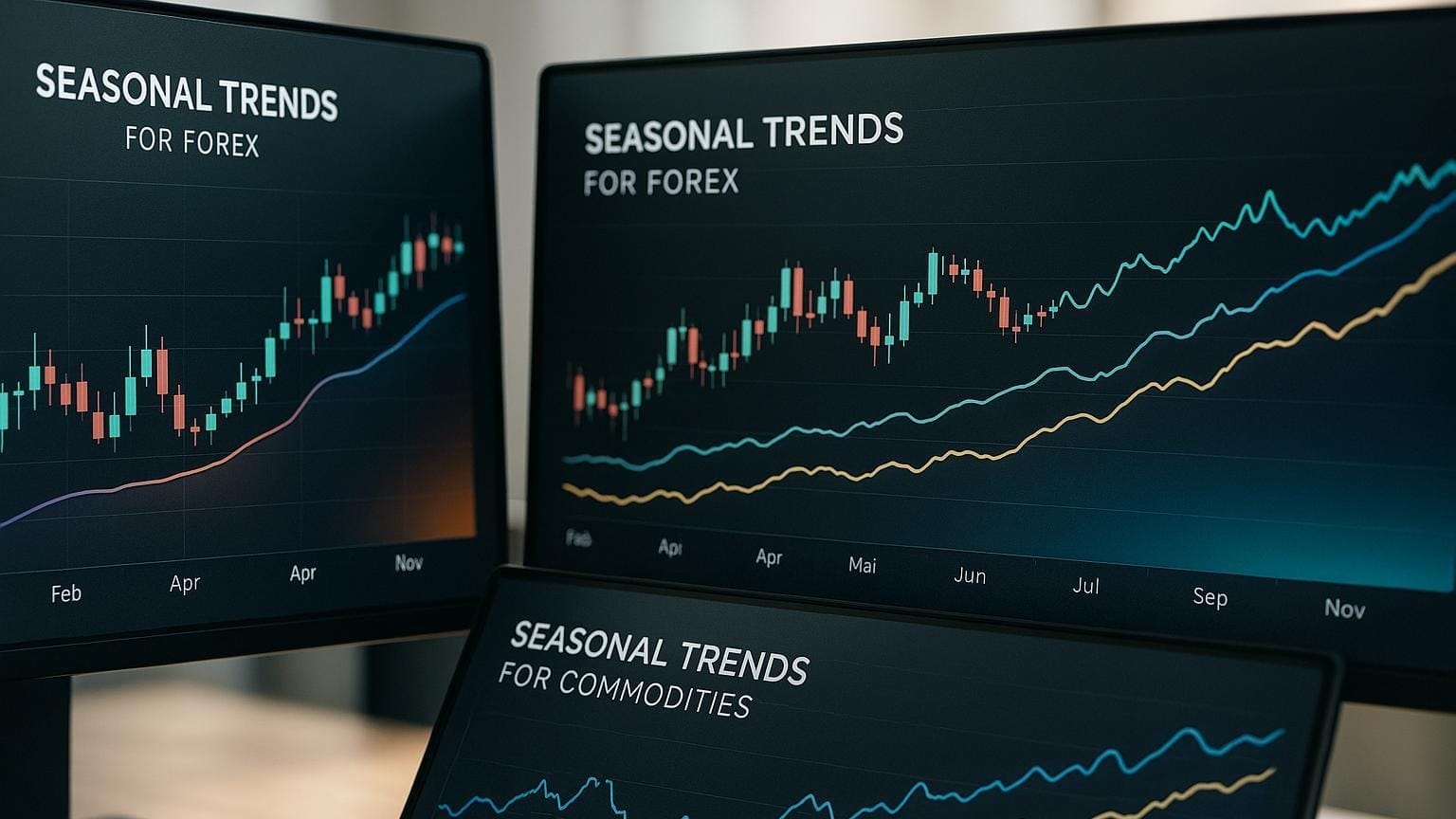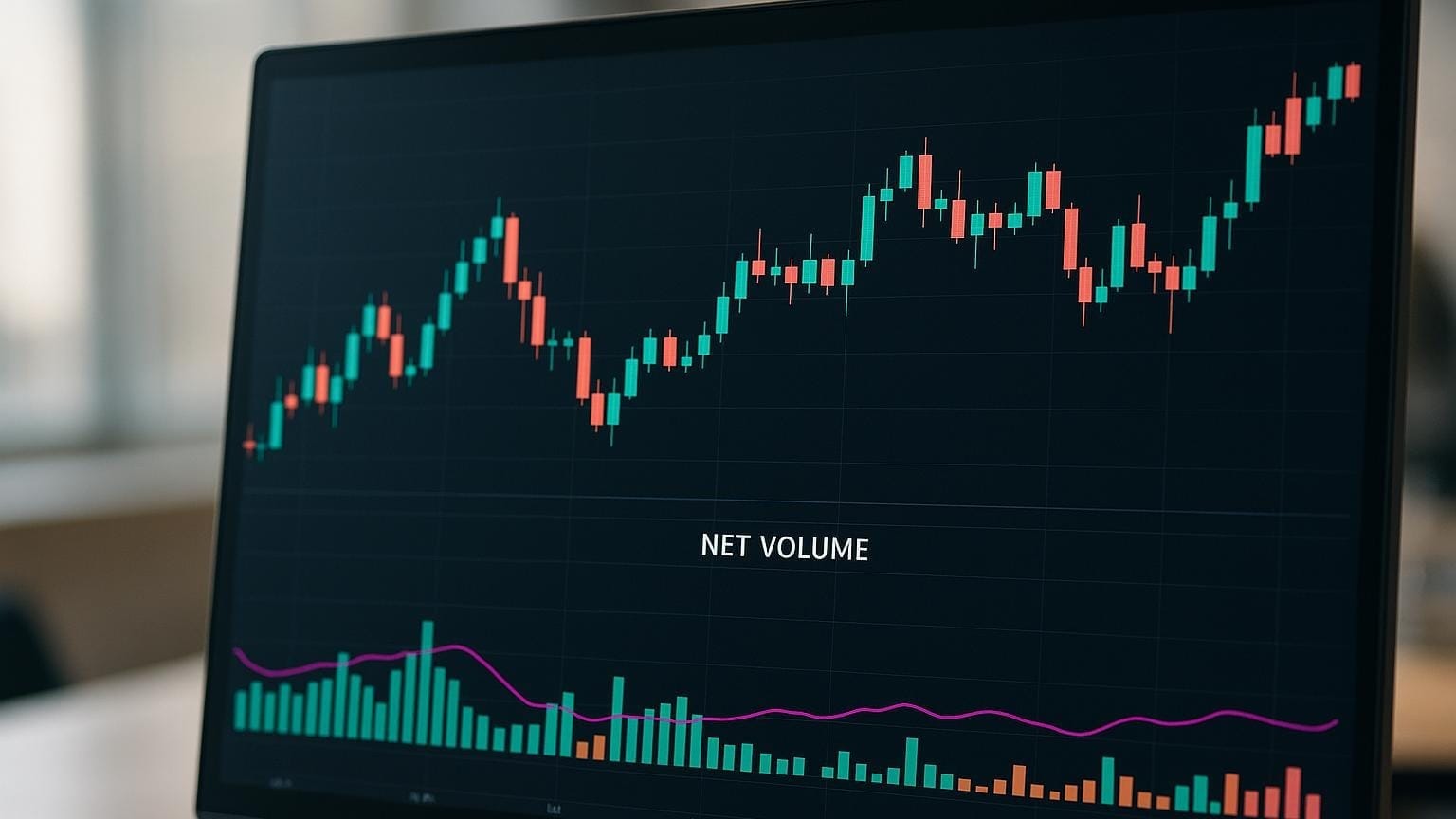Explore the simplified rules of Elliott Wave Theory to enhance your trading strategies and predict market movements effectively.
Elliott Wave Theory helps traders predict market movements by identifying recurring wave patterns based on investor psychology. Here's a quick summary of its core principles and rules:
-
Two Wave Types:
- Impulse Waves: Move with the trend in a 5-wave structure.
- Corrective Waves: Move against the trend in a 3-wave (A-B-C) structure.
-
Key Wave Rules:
- Wave 2 Rule: Cannot retrace more than 100 % of Wave 1.
- Wave 3 Rule: Cannot be the shortest among Waves 1, 3 and 5.
- Wave 4 Rule: Cannot overlap Wave 1's price range (except in rare cases).
-
Fibonacci Ratios for Precision:
- Wave 2 retraces 50-61.8 % of Wave 1.
- Wave 3 extends 138.2-161.8 % of Wave 1.
- Wave 4 retraces 23.6-38.2 % of Wave 3.
-
Practical Use for Traders:
- Spot entry points at the end of corrective waves.
- Identify exit points during impulse waves.
- Use Fibonacci levels for risk management and price targets.
Indicators from LuxAlgo simplify this process with automated wave detection, Fibonacci integration and real-time validation, making wave analysis faster and more precise.
ELLIOTT WAVE THEORY (Part 1): The Three Basic Rules …

Main Wave Pattern Types
In Elliott Wave Theory, market movements fall into two main categories: motive waves, which align with the primary trend, and corrective waves, which move against it. Below we break down the structures and roles of these patterns.
5-Wave Motive Pattern
Motive waves are made up of five sub-waves that follow the trend's direction. The most common type is the impulse wave, which follows a 5-3-5-3-5 structure. Here's a closer look at the waves:
| Wave | Characteristics | Trading Role |
|---|---|---|
| Wave 1 | Starts the trend | Establishes the baseline for future wave analysis |
| Wave 3 | Typically the strongest wave | Offers a strong trending move; cannot be the shortest of Waves 1, 3 and 5 |
| Wave 5 | Completes the pattern | Often marks a potential profit-taking zone |
In addition to impulse waves, diagonal waves appear near market extremes. These wedge-shaped patterns often indicate a trend is losing momentum.
3-Wave Corrective Pattern
Corrective waves move in the opposite direction of the main trend and follow a three-wave (A-B-C) structure. They can take several forms:
- Sharp Corrections (Zigzags): A steep 5-3-5 sub-wave sequence.
- Sideways Corrections (Flats): A horizontal 3-3-5 structure.
- Complex Corrections: Combinations of multiple patterns, labeled as W-X-Y or W-X-Y-X-Z.
Motive vs. Corrective Waves
| Feature | Motive Waves | Corrective Waves |
|---|---|---|
| Direction | Moves with the trend | Moves against the trend |
| Structure | Five distinct waves | Three interconnected waves |
| Predictability | Follows clear patterns | Can vary in form |
| Common Forms | Impulse, Diagonal | Zigzag, Flat, Triangle |
Understanding these patterns helps traders identify potential trend continuations or retracements, improving decision-making in dynamic market conditions.
3 Main Elliott Wave Rules
Elliott Wave analysis relies on three key rules to confirm wave patterns and maintain accuracy.
Wave 2 Maximum Retracement Rule
Wave 2 should never retrace more than 100 % of Wave 1's movement. This rule helps traders identify the maximum possible pullback after an upward trend. If Wave 2 moves beyond the starting point of Wave 1, the wave count is no longer valid.
How to validate:
- Measure the full price movement of Wave 1.
- Keep an eye on Wave 2's retracement level.
Wave 3 Length Rule
Wave 3 cannot be shorter than Waves 1 and 5. This rule highlights the most powerful part of the trend. Typically, Wave 3 has the strongest momentum and the highest trading volume, often making it the extended wave.
What to look for in Wave 3:
- Strong price momentum.
- The highest trading volume compared with other waves.
- A length that surpasses Wave 1.
Wave 4 Overlap Rule
Wave 4's price movement must not overlap Wave 1's range, except in rare diagonal formations. This rule ensures the overall trend remains intact.
Here's a quick reference table for these rules:
| Rule | Description | Validation Method |
|---|---|---|
| Wave 2 Rule | Cannot retrace more than 100 % of Wave 1 | Monitor retracement levels |
| Wave 3 Rule | Cannot be the shortest of Waves 1, 3 and 5 | Compare the lengths of impulse waves |
| Wave 4 Rule | Cannot enter Wave 1's price range | Check for overlap in price ranges |
“These three rules form the core of Elliott Wave analysis. The list above is probably much shorter and more straightforward than you might have thought.” – WaveBasis
While these rules are essential for confirming patterns, additional guidelines can provide more context but are not required.
Market Analysis Examples
Imagine a stock moving from $90 to $100 as Wave 1. Wave 2 might pull back to $95, Wave 3 could reach $108.20 (a 138.2 % Fibonacci extension), Wave 4 might dip to $102.16 and Wave 5 could aim for approximately $117.64 (176.4 % extension).
Time Scale Analysis
Elliott Wave patterns appear across different timeframes, each serving specific purposes:
| Timeframe | Characteristics | Best Use Case |
|---|---|---|
| Daily | Confirms larger trends | Analysing primary market directions |
| 4-Hour | Balances detail with clarity | Identifying trading entry/exit points |
| Weekly | Shows broad market cycles | Planning long-term positions |
Leveraging LuxAlgo’s indicators and toolkits can refine wave analysis across these timeframes for better precision.
LuxAlgo Elliott Wave Indicator

The LuxAlgo Elliott Wave indicator streamlines wave analysis with:
- Automatic Wave Counting
Identifies and labels impulse and corrective waves in real time, reducing the need for manual charting. - Rule Validation & Alerts
Continuously checks that counts respect Elliott Wave rules and sends optional alerts for pattern completion or invalidation. - Fibonacci Projections
Draws retracement and extension levels on each detected wave, highlighting common Fibonacci targets for Waves 2, 3 and 4 automatically. - Multi-Timeframe Scanning
Works with LuxAlgo’s screener to find active Elliott Wave setups across several assets and timeframes.
With these features, traders gain objective, rule-based insights into market structure, allowing them to focus on execution rather than manual counting.
Automated Wave Analysis with LuxAlgo
LuxAlgo applies Elliott Wave principles through automated features that provide real-time market insights.
Auto Wave Detection
The Elliott Wave indicator automatically spots wave patterns using pivot point analysis, creating clear ZigZag patterns. It highlights:
- Wave segments with visual markers
- Pattern confirmations using circles
- Pattern invalidations marked with red crosses
- Validated patterns based on Elliott Wave rules
Testing Wave Strategies
With the AI Backtesting Assistant, validating Elliott Wave strategies becomes straightforward. The platform offers:
- Pattern Validation: Ensures patterns align with Elliott Wave principles
- Historical Testing: Reviews success rates of identified patterns
- Risk Assessment: Helps fine-tune position sizing
The assistant works across multiple timeframes, giving traders a reliable way to test and refine strategies.
Trader Community Resources
LuxAlgo supports its users with a variety of resources, including:
- Round-the-clock technical support
- Video tutorials for easy learning
- Forums for sharing strategies
- Weekly scanner results for Ultimate plan members
“LuxAlgo allows me to see the market faster and confirm entries/exits. The technical support and Discord community are amazing. In my first week I earned 25 % of my capital – I’m happy to be in this family!” – Çağrı Güler
Manual vs. Toolkit-Assisted Analysis
Leveraging LuxAlgo’s indicators and toolkits offers a clear edge over manual analysis by providing:
- Automated pattern detection and confirmation
- Accurate Fibonacci calculations
- Real-time alerts for pattern formations or invalidations
“Hands down THE BEST indicators. If you think the free ones are amazing, wait until you try the premium features. Their walkthrough videos are concise, and the team is constantly perfecting the indicators. I was skeptical at first, but I’m SOLD – 100 % worth every penny.” – Eric Bland
These advanced features make it easier for traders to incorporate Elliott Wave analysis into their strategies.
Key Takeaways
Elliott Wave Theory only works when three main rules are followed exactly:
Rule 1: Wave 2 Retracement
Wave 2 cannot retrace more than 100 % of Wave 1. If it moves beyond the start of Wave 1, the count is invalid.
Rule 2: Wave 3 Dominance
Wave 3 cannot be the shortest wave among Waves 1, 3 and 5. This wave typically represents the strongest trend with the highest volume and momentum.
Rule 3: Wave 4 Boundaries
Wave 4 cannot overlap the price territory of Wave 1, except in rare cases like diagonal triangles. This preserves the integrity of the five-wave structure.
“Elliott Wave Theory rules MUST be obeyed precisely for a pattern to qualify – guidelines, however, are flexible. The more guidelines a pattern meets, the higher its probability of being correct.” – XForceGlobalWizard, TradingView
Using Fibonacci Relationships
Fibonacci ratios add another layer of precision to wave analysis:
- Wave 3 often extends 1.618 × the length of Wave 1
- Wave 2 typically retraces 50 % or 61.8 % of Wave 1
- Wave 4 usually pulls back 38.2 % or 50 % of Wave 3
LuxAlgo incorporates these principles to streamline wave analysis by:
- Validating wave patterns based on the core rules
- Automatically calculating Fibonacci ratios
- Sending real-time alerts for pattern formations
- Offering detailed backtesting capabilities
While guidelines provide additional insight, the three core rules are non-negotiable. Combining these rules with automated features from LuxAlgo helps traders refine strategies effectively.
FAQs
How can traders use Fibonacci ratios with Elliott Wave Theory to improve their trading strategies?
Fibonacci ratios are a powerful addition to Elliott Wave Theory, helping traders identify key levels of support, resistance and potential price targets. These ratios are applied to both impulsive waves and corrective waves to predict market behaviour more effectively.
For impulsive waves, Fibonacci extensions can help estimate potential price targets for Wave 3 and Wave 5, which are usually the strongest moves. In corrective waves, Fibonacci retracements pinpoint levels where price may reverse or consolidate, such as the 38.2 %, 50 % or 61.8 % retracement levels.
By incorporating Fibonacci analysis into Elliott Wave patterns, traders can make more informed decisions and refine their entry and exit points with greater confidence.
What are some common mistakes traders make when analysing Elliott Wave patterns, and how can they avoid them?
A common mistake is confusing rules with guidelines. Rules are strict and must always be followed—for example, Wave 2 can never retrace more than 100 % of Wave 1. Guidelines are flexible and increase the likelihood of accurate pattern identification.
Another error is forcing patterns to fit preconceived expectations. Traders should focus on the natural flow of price movements, ensuring their analysis aligns with Elliott Wave principles. Consistent practice and reviewing real-world examples improve accuracy over time.
How can LuxAlgo improve the accuracy and efficiency of Elliott Wave analysis for traders?
LuxAlgo’s Elliott Wave indicator and screeners automate the identification of key patterns and Fibonacci retracements, saving time and reducing manual errors. They also provide real-time alerts and backtesting capabilities, enabling traders to validate strategies and manage risk more effectively. By offering clear, actionable insights, LuxAlgo helps traders confidently apply Elliott Wave Theory in their decisions.


